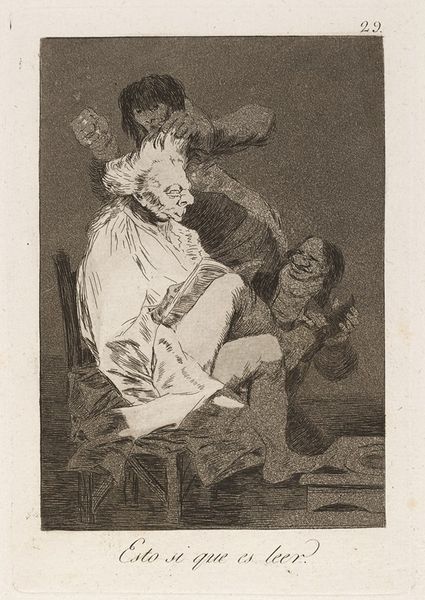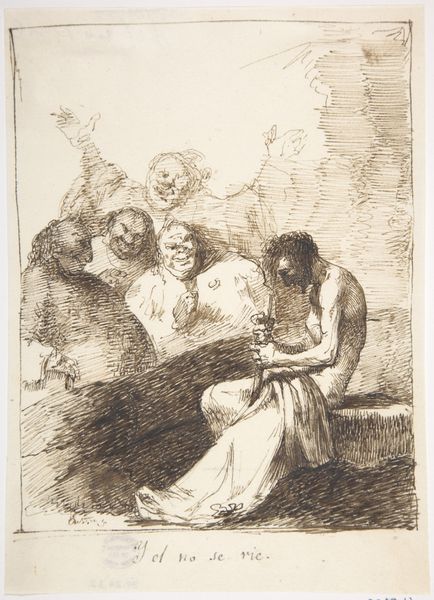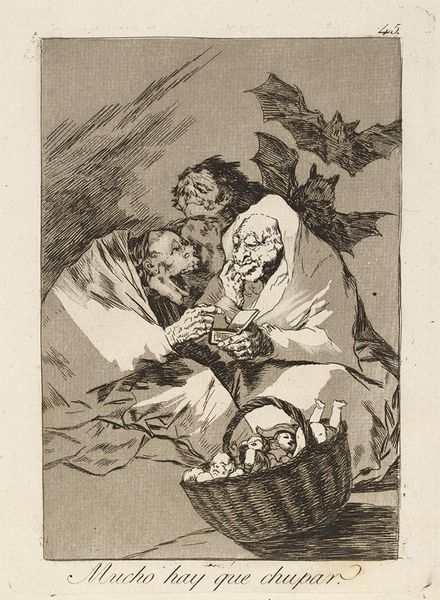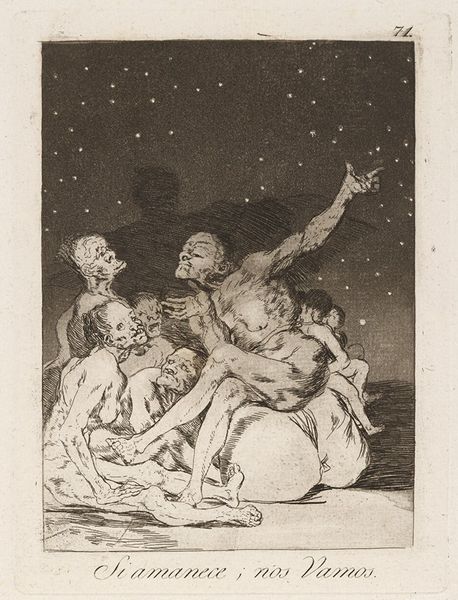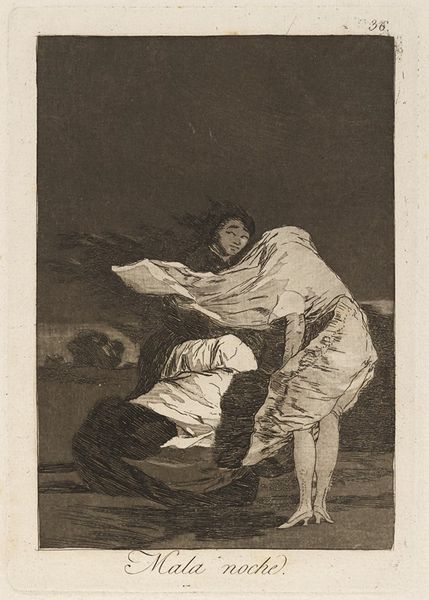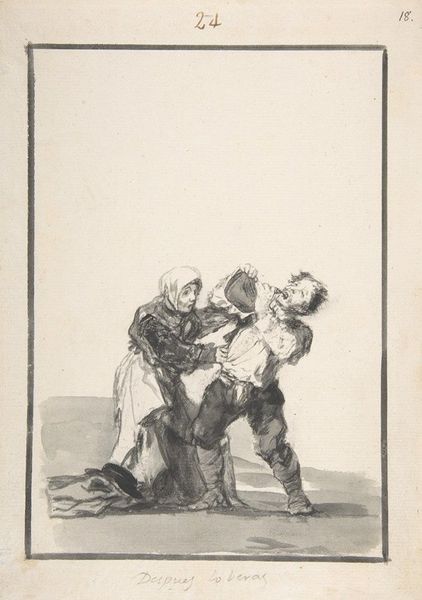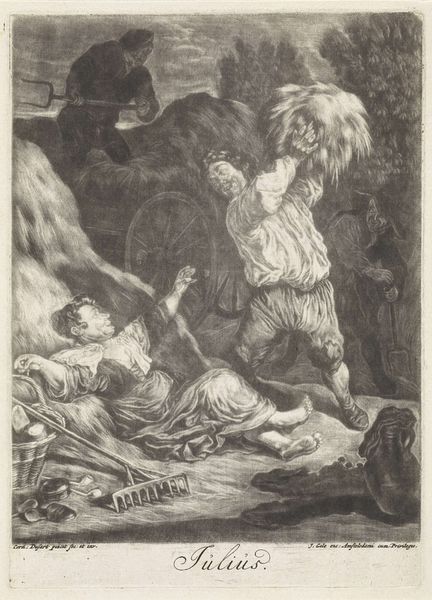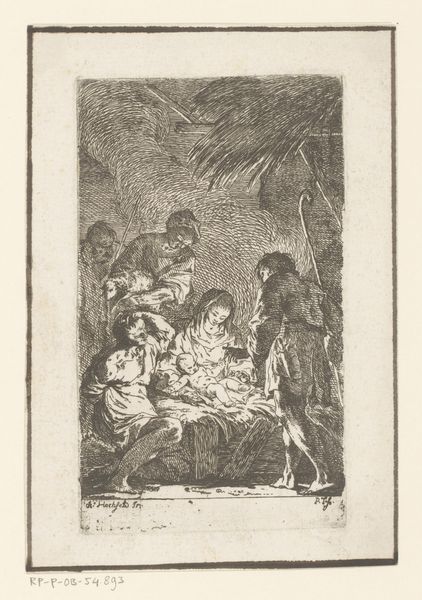
Copyright: Public Domain: Artvee
Francisco Goya made this etching, titled "Obsequio á el maestro," as part of his "Los Caprichos" series. The nightmarish scene reflects anxieties about social and religious institutions in late 18th-century Spain. Goya presents a grotesque parody of reverence, challenging the viewer to question established hierarchies. Figures with distorted features gather around what appears to be a newborn, offering it as a tribute to a shadowy "master." Is this a critique of the Church, the aristocracy, or perhaps even the institution of art itself? To fully understand Goya’s intent, we need to delve into the historical context: the Inquisition's lingering power, the rigid social classes, and the burgeoning Enlightenment ideals. Contemporary accounts, political cartoons, and even the artist’s own letters can offer invaluable insights. Ultimately, Goya's work reminds us that art is never created in a vacuum; it's a product of its time, reflecting and challenging the social norms and power structures of its era.
Comments
No comments
Be the first to comment and join the conversation on the ultimate creative platform.

